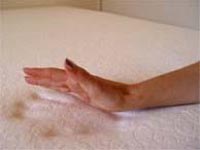
Mapping the optimal route between 2 quantum states
As a quantum state collapses from a quantum superposition to a classical state or a different superposition, it will follow a path known as a quantum trajectory.
For each start and end state t ... more
|  |

Scientists separate a particle from its properties
Researchers from the Vienna University of Technology have performed the first separation of a particle from one of its properties. The study, carried out at the Institute Laue-Langevin (ILL) and pub ... more
|  |

 The first animals on Earth may have been sea sponges, study suggests
The first animals on Earth may have been sea sponges, study suggests

 Small Satellite Contracted to Probe Climate Effects of Space Radiation
Small Satellite Contracted to Probe Climate Effects of Space Radiation

 Fengyun satellite strengthens China global weather forecasting capacity
Fengyun satellite strengthens China global weather forecasting capacity

|  |

Lifetime of gravity measurements heralds new beginning
Although ESA's GOCE satellite is no more, all of the measurements it gathered during its life skirting the fringes our atmosphere, including the very last as it drifted slowly back to Earth, have be ... more
|

Young binary star system may form planets with weird and wild orbits
Unlike our solitary Sun, most stars form in binary pairs - two stars that orbit a common center of mass. Though remarkably plentiful, binaries pose a number of questions, including how and where pl ... more
|  |

Tidal forces gave moon its shape
The shape of the moon deviates from a simple sphere in ways that scientists have struggled to explain. A new study by researchers at UC Santa Cruz shows that most of the moon's overall shape can be ... more
|
 |

Mercury's magnetic field tells scientists how its interior is different from Earth's
Earth and Mercury are both rocky planets with iron cores, but Mercury's interior differs from Earth's in a way that explains why the planet has such a bizarre magnetic field, UCLA planetary physicis ... more
|  |

MESSENGER Gets Closer to Mercury than Ever Before
On July 25, MESSENGER moved closer to Mercury than any spacecraft has before, dropping to an altitude at closest approach of only 100 kilometers (62 miles) above the planet's surface.
"The sci ... more
|
 Scientist underlines threat of inevitable "solar super-storms"
Scientist underlines threat of inevitable "solar super-storms"





 Worlds most powerful centrifuge begins operations in China
Worlds most powerful centrifuge begins operations in China Breakthrough in UAV swarm intelligence as SRI redefines topology mapping
Breakthrough in UAV swarm intelligence as SRI redefines topology mapping China factory activity shrinks in September for sixth straight month
China factory activity shrinks in September for sixth straight month